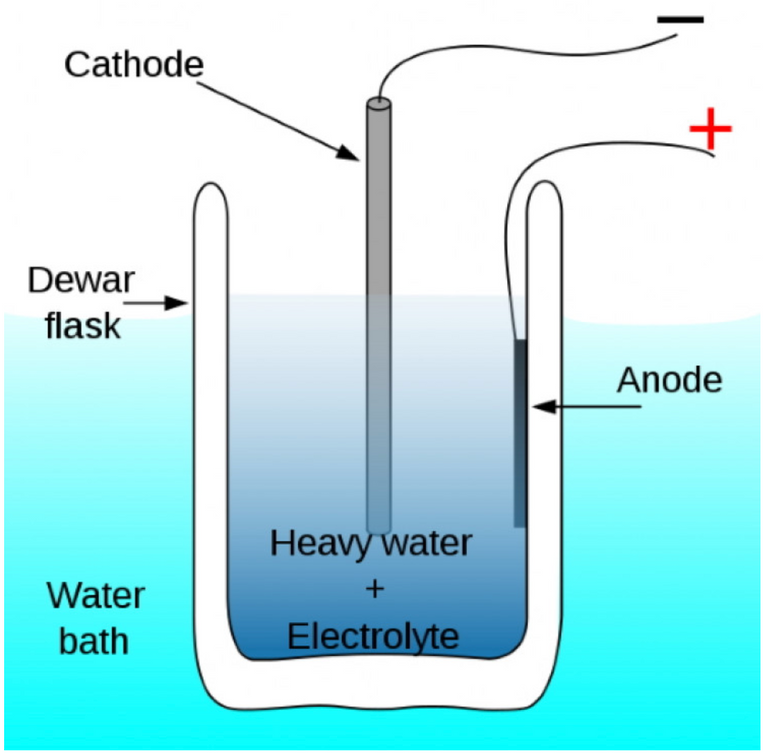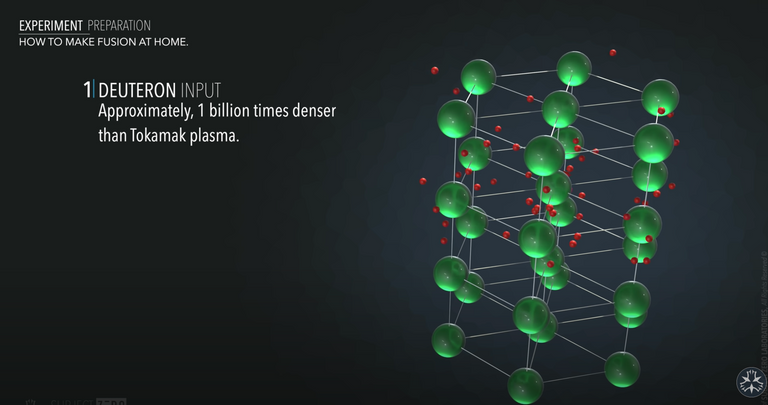Experimental Energy - Cold Fusion
Technology develops at the speed of need. If we need something, we are more apt to dedicate resources to obtain it. Technology follows a similar pattern. The need for a new form of power is great enough to encourage multiple countries to join their efforts to achieve this holy grail of power. However, it is not great enough to get us there at the time we wish.


Welcome

Welcome fellow readers to our third installment in the Energy Series Phase II - Experimental Energy. In our previous article, Experimental Energy - Fusion, we discussed the basics of fusion and covered the more popular attempts at achieving it on Earth. What we have not discussed, however, are the less popular yet experimentally effective forms out there.

What is Cold Fusion?

Where fusion on Earth occurs at temperatures that far surpasses the sun's core temperatures, cold fusion occurs at, or near, room temperature. In one case, fusion can occur at near absolute zero.
Unfortunately, cold fusion experiments are not as developed as the more popular fusion experiments. However, given that cold fusion experiments are possible without replicating space-bound conditions, it is indeed a path worth researching.
If we could have dispelled with hubris that comes with a self-fulfilling prophecy, then perhaps cold fusion would be further advanced today.

Production Analysis

Commercial nuclear power plants are heavily regulated for good reasons. During my time working in a chemistry lab at a nuclear plant, I had to adhere to strict protocols to ensure that the results reflected actual plant conditions.
Once I completed my analyses, I was required to validate the chemistry results I obtained with another qualified chemist. Once my results were validated, the supervision steps in to approve the findings. These findings are then indefinitely stored for scheduled and unscheduled review by a myriad of regulatory agencies.
If we received a questionable result, the expectation was always to reobtain a sample, reanalyze, and then seek re-verification. Following re-verification, we report the results and mitigate any plant chemistry problems or further investigate human error in the analysis.
The point in these checks and balances is to ensure we carry out proper behaviors to achieve a valid and procedural result. Technicians don't sound the alarm with control stations. They seek validation, and then management personnel makes the announcement.
Reporting your results without verification will lead you to a path where recovery from communication is harrowing.

Pons-Fleischmann Experiment

A single-famous scientific faux pas occurred in the late 1980s when Pons and Fleischmann announced to the world their discovery of cold fusion.
The idea of fusion occurring at room temperature is appealing. VERY appealing. Imagine a world where you DON'T have to create fusion by re-creating, or surpassing, conditions within a star to create energy. It's appealing. You wouldn't need to wait over a century before even building a prototype that actually produces electricity.

In their experiment, Pons & Fleischmann (P&F) utilized a jar filled with heavy water. They placed a palladium cathode into the solution and applied an electrical current to the heavy water via the cathode. According to their paper, the heat generated resulted from neutron release following the fusion of deuterium absorbed by the palladium cathode.
The problem in their announcement wasn't their research. It was the announcement. While marveling in marveling at their discovery, they notified the world of what they unraveled. They failed to be diligent in their results and ensure it was vetted thoroughly before publishing their results.
The publicity of their findings attracted the attention it deserved. Scientists across the globe rushed to reattempted their results with findings that contradicted the original announcement: Reports replicated similar results as the Pons experiment. In contrast, many others found no observational changes. The backlash that followed moved cold fusion from the mainstream into the "back alleys."
I don't want to mislead you. I haven't read their paper. I only know of their work following their announcement. However, given the amount of feedback from the global community, it doesn't seem they did their due diligence before the media event.

End of Cold Fusion?

The more serious and technical name for Cold Fusion is Low Energy Nuclear Reactions (LENR). The Pons-Fleischmann debacle in the late 1980s hasn't killed this research area. Countries still perform research into cold...err, LENR despite inconsistent results.
There are some areas in cold fusion research; however, that merits note in this discussion.

Muon-Induced Fusion

Muons are energetic subatomic particles produced as a result of cosmic ray interactions. Particle accelerators can also produce muons. These particles were first theorized by Dr. Frederick Charles Frank in 1947. The muon's ability to induce fusion occurred accidentally during an experiment run by Dr. Luis Alvarez in 1956.
Muons are approximately 200 times larger than electrons. When introduced into an atom, the muon ejects the electron and brings the nuclei closer together than with an electron. The much closer distances virtually guarantee fusion between atoms at a much higher rate than the mainstream fusion methodologies of today.
Muon Problems?

The only way we can get muons is through the use of a particle accelerator on Earth. However, manufacturers are working on ways to decrease the need for large-scale experiments. The use of muons in larger-scale fusion experiments would be amazing as the temperatures needed for fusion to occur could be from close to absolute zero to room temperature.
One company in Australia named Star Scientific works to create muon-induced fusion for power production. They utilize a new type of muon generator to inject the muons into the fuel medium for very efficient, and almost instantaneous, fusion activities at least at an experimental level with deuterium or tritium.
Star Scientific doesn't generate fusion at cold, room temperature conditions, however. Instead, they generate fusion in hotter conditions around 700 degrees-C. Although, when compared to the temperatures sought in a project like magnetic confinement that reaches temperatures as high as hundreds of millions of degrees, Star Scientific's approach is cold enough, I guess. Raising their experiments' temperature and their deuterium fuel concentration allows for higher probabilities of fusion interactions given the muon's short 22-microsecond half-life.

NASA, Arriving

If there a group the world would take seriously, it would be NASA. The NASA organization virtually created the space agency since the 1960s and has been very generous in its sharing of information between countries since its existence began.
Their motivation is space travel and the use of energy in space. The use of fusion energy solves many problems for them when considering its use for long-distance travel. However, generating plasma at extreme temperatures or using muons to induce fusion spontaneously isn't exactly possible when transiting between heavenly bodies. Oh, what, I wonder, could NASA bring to the table of fusion processes that already exist?
Lattice Confinement Fusion
Leave it to NASA to discover, or remodel, a fusion process to suit their needs.

Using a stable metal named Erbium, NASA highly concentrates it with Deuterium at a billion times greater than possible within the Tokomak's Reactor plasma.

The metals, under the experimental conditions, are initially at room temperature. Heating does occur, however, once an x-ray beam is focused upon the metal alignment. Fusion reactions are induced and cascade along the arrangement shown above.

In Summary
Humanity will still achieve stable, reproducible, and constant fusion power—one question, presented by @ervin-lemark, regarding the time frame of fusion power production. The science involved with Earth-bound fusion is immense and at the leading edge of our pursuits in achieving clean energy. From Hans Beths discoveries in the 1930s to the ITERs final test scheduled for 2035, it would be over a century before we know of the success in the area of Magnetic Confinement Fusion. And this is just the fusion part of the process. I don't believe we've even tried to breach the topic of how we're going to transfer power for electricity generation or any of the safety measures that need to be implemented.
My answer to @ervin-lemark is this; any advancement we make towards the reliable production of fusion power is a breakthrough that brings us closer to achieving it.

In Closing

Image by Gerd Altmann from Pixabay
Thanks again, fellow readers, for following me along on this HIVE journey. It's been a great ride, and I've appreciated all the reviews and votes from everyone. I'll be continuing with STEM-related articles as always, but I will also be delving into finances, trading, and cryptocurrencies!

Special thanks to @ervin-lemark for the stimulating conversation in my last post, Experimental Energy - Fusion. And, as always, StemGeeks and StemSocial families, for your continued support.
Your thoughts?

Image by Free-Photos from Pixabay
What was your favorite article so far? Is there anything else you'd like to see covered? Share your thoughts by entering your comments below!

Posted with STEMGeeks
https://twitter.com/HiveScholaris/status/1335353092192124929
@tipu curate
Upvoted 👌 (Mana: 98/112) Liquid rewards.
Thank you very much for your support!
You were quicker this time :)
I'm too fast always ;-)
That's what you are!
Congratulations @scholaris! You have completed the following achievement on the Hive blockchain and have been rewarded with new badge(s) :
You can view your badges on your board and compare yourself to others in the Ranking
If you no longer want to receive notifications, reply to this comment with the word
STOPDo not miss the last post from @hivebuzz:
Great post, thanks.
I'll be honest: I don't hold great hope for cold fusion - at least not in usable form within my lifetime. It is a sad reality that we spend far too little money on science and far too much of it on buying votes, making money and similar dirty and frivolous pursuits.
I wouldn't rule it out though and would delight in seeing it become a reality... if the energy corporations and their extremely wealthy investors allow it ...
I agree with you. By the time the ITER completes its final test I’ll almost be at retirement age. Their testing process beyond that point would be to make a prototype for producing commercial electricity and not the actual commercial plant
On the plus side, we are seeing exciting developments in hot (VERY hot!) fusion reactors at this very moment. Considering that atomic energy is only about 80 years old, I'm satisfied with that!
I feel that the main difference between fission and fusion development was the war. We had to create technologies for fission from scratch and, at the time, the worlds resources were completely dedicated to it.
You can’t outpace a technology the entire world pushes.
Thank you very much for mentioning me, I appreciate it.
I stopped reading where the muons are mentioned to ask you a question.
What about putting reactors in orbit where muons are plentiful and a cold environment is guaranteed?
Then all we need is to reinvent Tesla's wireless energy transfer :)
I would say that building a reactor in space is on the theoretical side of power production. Society can’t even approach that level of experimentation yet. I have no doubt though that someone has considered it.
Reactor in space == spaceship engine :)
It should be considered if we ever wish to be a starfaring civilization.
After reading the whole article, thanks again.
Yes, scientific advancement takes time, and then it spills over the edge and produces a breakthrough. And then it takes time again :)
Your notion of issues connected to the energy delivery, both the infrastructure and quantity, reminded me of another area. Electric vehicles and a hipe connected with them. If we really wish to fuel all those EV's that will flood our roads in the near future then we need much more electricity and much better leylines :)
Heat transfer and energy delivery is part of the series after I’m done with theoretical power production. There is definitely a lot of hype about it.
Since the creation of the first coal-steam power plant there hasn’t been all that much innovation on the electrical generation side
No, there hasn't. The industry is too powerful :)
Imagine that the electric cars survived the internal combustion engines powered vehicles onslaught early in the history of autonomous locomotion? Where would we be now?
I think it was the Electric Car company in the early 1900s that had their warehouse of electric taxis burned to the ground. No more electric cars appeared en mass until Ford did their prototype.
I am not familiar with the background yet it is said that the fire wasn't a coincidence. Things like these make me wonder in what direction could humanity be advancing if things turned differently at some crossroads ... Like the oil industry, for example
There are documentaries on the net of other projects supposedly deep-sixed by Big Oil. One project was a gas vapor engine. It was supposedly able to get a car to travel 1000-2000 mile on two gallons of gas. The tech was real but I don’t know if what happened to those people were real.
Absolutely awesome work and love the ponderings and musings of the cold fusion desire.
Hopefully one day one of these children growing up will discover the secret
Thank you very much. I have no doubt fusion will get there one day. What’s funny is that the next big thing will be chomping at its heels not too soon after.
I completely agree thank you very much for your post I really appreciate it
You're very welcome, friend, and thank you for the conversation. I look forward to having many more in the future.
Keep spirit